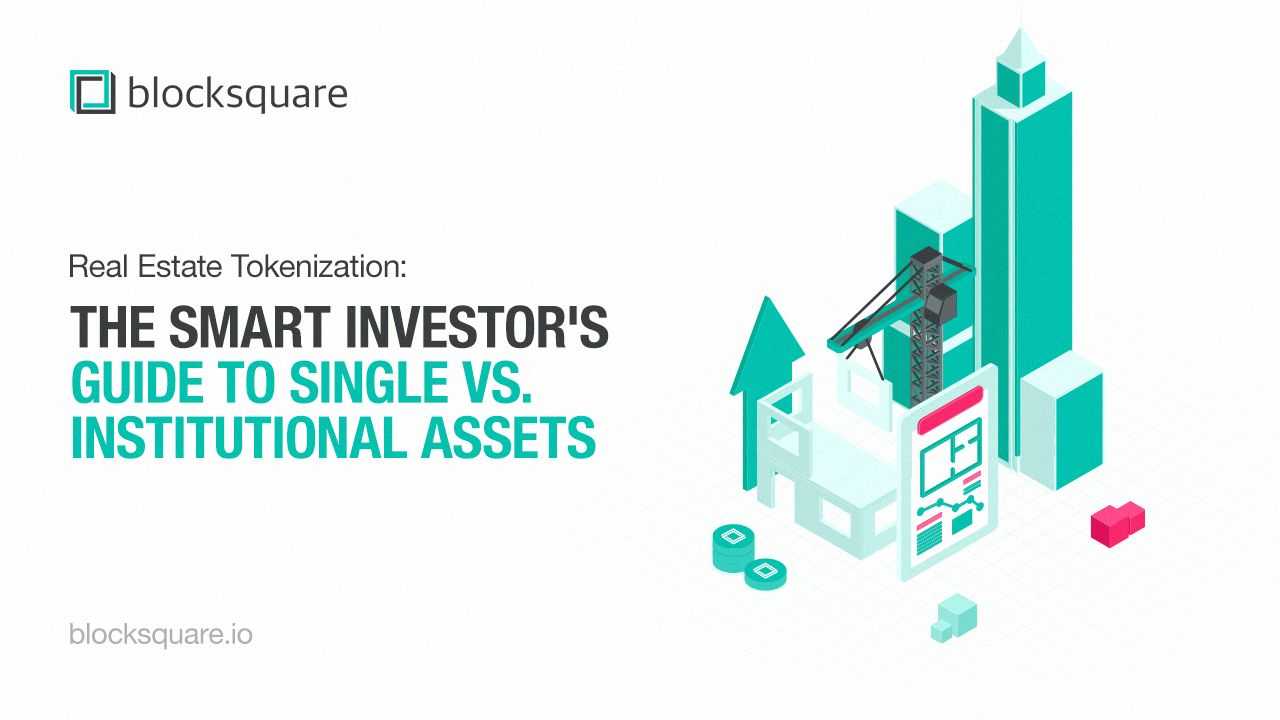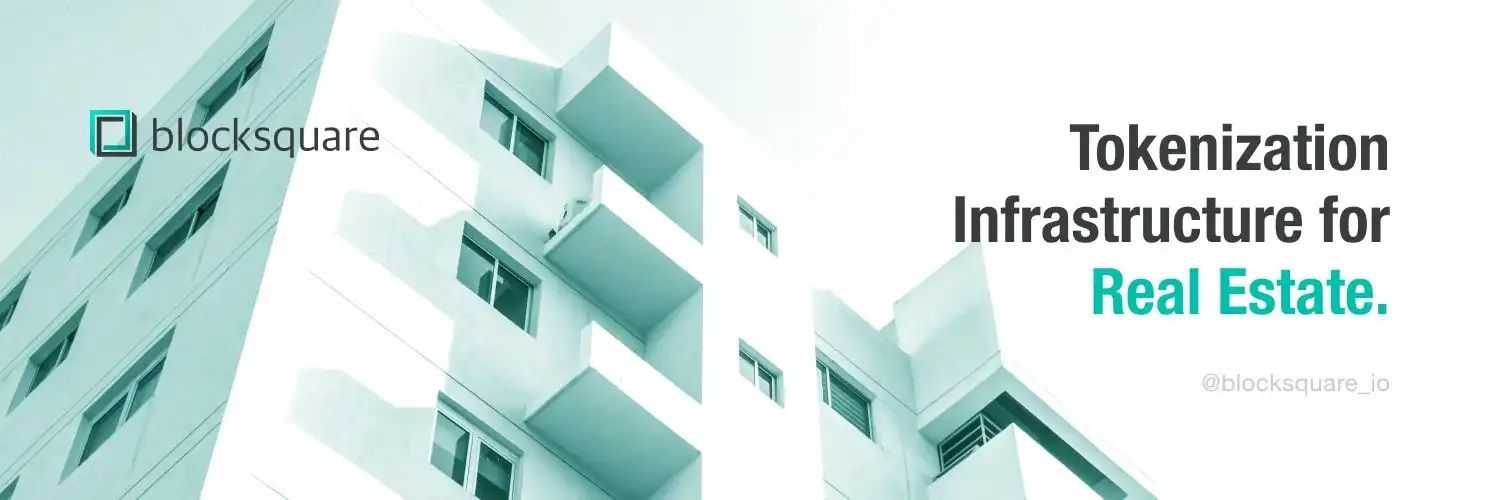Real Estate Tokenization: The Smart Investor's Guide to Single vs. Institutional Assets
The Future of Real Estate Investment is Tokenized. If you think real estate investing is only for the ultra-wealthy, think again. Tokenization is flipping the script, giving everyday investors the power to own fractional shares in properties that used to require millions in capital. But here's the kicker: not all tokenized assets are created equal. There's a big difference between single-unit tokenization and institutional asset tokenization, and understanding that difference could make or break your investment strategy.


In this guide, we're diving deep into what makes these two asset classes tick, the pros and cons of each, and why institutional assets are quietly becoming the golden ticket for serious investors. The insights and quotes shared throughout come from episode 111 of "Block-Chat," a discussion between industry leaders Denis Petrovcic and Makram Hani.
What Is Real Estate Tokenization?
At its core, tokenization turns property ownership into digital tokens on a blockchain. Instead of holding a paper deed or going through complex legal structures, you hold a token that represents your stake in a property. It's the same property, same ownership rights, but now it's programmable, traceable, and tradable.
But tokenization doesn't magically improve a bad investment. As Makram Hani said, "If you have a successful real estate investment, you will have a successful tokenized real estate investment. If you don't, you don't." Tokenization is a wrapper. The contents still matter.
Single-Unit Tokenization Explained
Single-unit tokenization involves fractionalizing a standalone property, like a townhouse, condo, or single-family home. You buy a portion of a single address, and your returns depend on that specific unit's performance.
These properties are often part of strata-titled developments (like condos), or they could be standalones (like detached homes in suburban areas). They're easier for the average person to understand, often more accessible in price, and can serve as an entry point into real estate investment.
Pros of Single-Unit Tokenization:
-
Lower buy-in costs
-
Familiar asset type for most retail investors
-
Easier to emotionally connect with (you can picture the property)
But Here’s the Problem:
-
Operational inefficiency: Each unit needs its own maintenance, management, and oversight.
-
Local risks: A bad neighbor or a delayed repair can tank the unit’s performance.
-
High overhead: Managing single units doesn’t scale well, making it expensive per unit.
Even if you have a portfolio of 1000 single units, it might only become efficient if managed as an institution-like operation—centralized maintenance, in-house teams, tech-enabled oversight. Most tokenized single-units aren’t there yet.
Institutional Asset Tokenization: The Big League
Institutional assets are larger real estate holdings: apartment complexes, student housing portfolios, hotel buildings. Think $50 million to $500 million deals. These are typically held under a single deed and managed as one entity.
When tokenized, they give investors exposure to robust, high-performing assets without needing to buy the whole thing. You own a slice of something much bigger and more stable.
Why Institutional Assets Win:
- Economies of Scale: One team manages hundreds of units under one roof. Cost per unit drops. Service levels go up.
- Professional Property Management: These are often run by companies with fiduciary responsibilities. That means they’re legally obligated to act in the best interests of the investors.
- Predictable Cash Flow: Multi-tenant buildings diversify risk. If one unit goes vacant, others still generate income.
- Better Liquidity Potential: High-quality assets attract more buyers. Tokenizing them opens up partial exits without fire-sale discounts.
The Catch? Tokenizing institutional assets isn’t just plug-and-play. It requires:
-
A legal framework that supports fractional ownership.
-
Smart contracts that can enforce rights, dividends, and responsibilities.
-
Transparent property management with on-chain records (think IoT sensors logging maintenance, utility usage, etc.)
The good news? These systems are being built. In some cases, they've already been piloted successfully. One example cited was a student housing investment in Slovenia: not a $500M skyscraper, but big enough to demonstrate the model works.
The Popular But Risky Middle Ground: Hotel Apartments
Hotel apartments and fully-managed branded residences are gaining traction. Why? They're sexy. They offer hands-off investing. Regulators like them because they centralize risk and responsibility.
But insiders know this: hotel apartments are one of the least efficient real estate investments in a strata format. Owning a single unit in a hotel rarely delivers strong returns.
Makram Hani explained, "Hotel apartments or fully managed branded residences will get the most traction... but they're one of the least efficient, least productive assets you can have as an investor."
The appeal is largely psychological and logistical—not financial. They’re marketed as "luxury lifestyle investments," especially to overseas buyers who want exposure to a market like Dubai, New York, or London but don’t want to manage anything.
Efficiency Starts with Management
One of the strongest insights is that tokenization lives or dies by property management.
-
If property managers don’t have fiduciary duties, conflicts of interest arise.
-
If there's no digital audit trail, mismanagement can go unnoticed.
-
If repairs, maintenance, and rent collection aren’t standardized, cash flow gets messy.
Makram emphasized,
"Property management that does brokerage has a conflict of interest. Property management that does anything else... has a problem."
That’s why he advocates for specialized firms focused only on property management, with full transparency and accountability.
This kind of specialization builds trust. And trust, ironically, is what enables a "trustless" blockchain ecosystem to function. You shouldn't have to trust someone; the system should guarantee fairness.
Liquidity: The Final Frontier
Institutions will only bring their assets on-chain if they see proof of liquidity. That means:
-
There’s a healthy market for tokenized properties.
-
Retail and institutional buyers are actively trading.
-
Assets don’t sit idle waiting for someone to buy 100% of them.
Makram noted,
"The minute we get a proper asset that is a great quality investment on-chain, people will eat it like hot candy."
And with more high-quality assets coming online, tokenization is no longer about testing the waters. It's about unlocking global real estate access to a broader class of investors.
Tokenization Use Cases: Liquidity vs. Capital Raising
Tokenization can serve two roles:
-
Sell-side liquidity: Asset owners fractionalize to sell to multiple investors.
-
Buy-side capital raising: Firms raise funds to acquire future assets.
The latter is trickier. It requires strong regulation, full disclosure, and fiduciary safeguards. You can’t let just anyone raise funds for vague "future deals" using tokens. That leads to misuse, mismanagement, and eventually, investor mistrust.
So while both models are valid, most experts suggest starting with proven assets first. Tokenize what you own. Build liquidity. Then raise for new acquisitions.
What Makes a Tokenized Asset Viable?
Here’s the checklist:
-
High-performing underlying real estate
-
Transparent, tech-enabled property management
-
Legal clarity on ownership and rights
-
Smart contract infrastructure for payouts and governance
-
Demand from buyers (proof of liquidity)
Whether it’s a single parking space or a €60 million student housing complex, the asset must make sense. Tokenization doesn't fix bad investments. It amplifies the good ones.
Conclusion: The Future is Fractional, But Not Fragile
The next era of real estate is programmable, fractional, and global. But it's not automatic. Success hinges on standards, trust, and strong asset quality.
Institutional asset tokenization leads the way—offering efficiency, performance, and scale. But single-units have their place, especially when properly managed.
As Denis Petrovcic noted,
"Whether it's a single unit or an institutional asset, if it's properly managed, it's probably going to yield a better result for investors."
If you're serious about real estate investing in the modern world, understand this: tokenization is the tool. Real estate is still the game. Learn the rules of both, and you won't just ride the wave—you'll own it.
